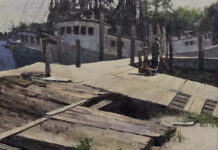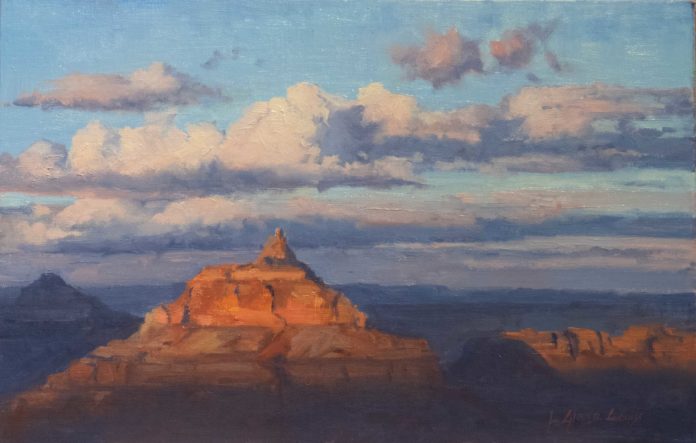
At the time John Wesley Powell began his historic expedition through the Grand Canyon in the late 19th century, most Americans knew virtually nothing of the natural wonder. For many, their introduction to the majestic landscape came by way of the paintings of Thomas Moran (1837–1926), who joined Powell on his third trip through the canyon, in 1873.
Manifesting the romantic ideals of the day, the scale and colors of the canyon depicted in the works fired the imagination of the American people and helped drive public support for the site’s protection.
In this way, Moran and his work were influential in compelling President Theodore Roosevelt to declare the site a national monument in 1908, calling it “the one great sight which every American should see.” Congress passed the bill to grant national park status to the area in 1919, and President Woodrow Wilson made it official.
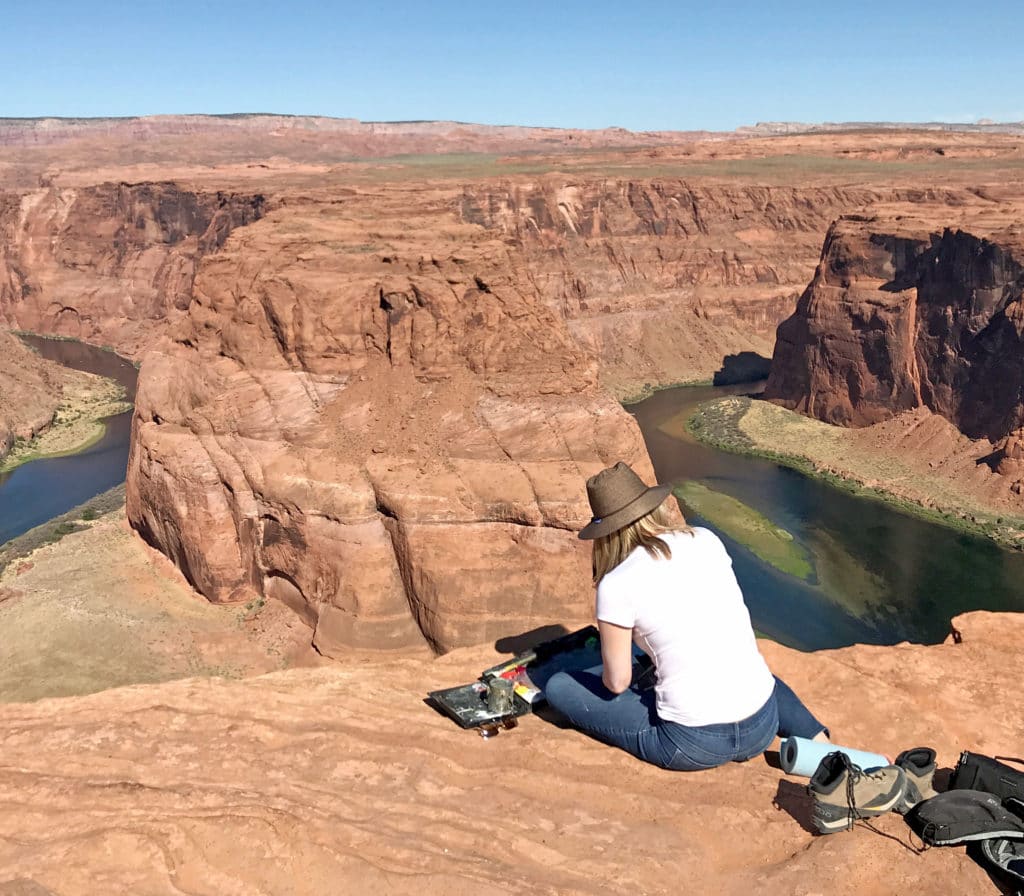
Today, the Grand Canyon National Park boasts the additional title of UNESCO World Heritage Site, and welcomes approximately six million visitors annually. To celebrate its 100th anniversary this year, I talked to Bill Cramer, Amery Bohling, Linda Glover Gooch, John D. Cogan, and Marcia Molnar — all well known for their paintings of the Grand Canyon — and got their takes on the top spots to paint.
Where to Paint at the Grand Canyon:
Kelly Kane: You’re headed to the Grand Canyon to paint. What’s your go-to spot?
Bill Cramer: That’s like asking “What’s your favorite color?” I’ve got so many favorite spots, including a few along the South Rim where I’ve enjoyed the company of fellow artists, just hanging out and sharing ideas, wine, and, of course, the view. There’s also a place at Trail Overlook that’s special for the same reason, and I return there fairly often; it’s a great place to paint at sunset and watch the moon rise. Yaki, Mohave, and Pima Points top the list, too.
Amery Bohling: I’m a sucker for Moran Point. Its composition is naturally beautiful and it has great morning and afternoon light.
Linda Glover Gooch: Moran Point also has enormous boulders that line the edge of the rim and provide a beautiful foreground to the canyon below. There is a solitude out there that I enjoy, as well.
John D Cogan: My favorite spot is Angels Window, a remarkable towering formation of Kaibab limestone with a natural bridge crowning its upper section. Glorious in both morning and evening light, it can be found on the North Rim near Cape Royal.
Marcia Molnar: Zoroaster Temple from any place on the South Rim — I never get tired of watching the shapes and colors change with the setting sun.
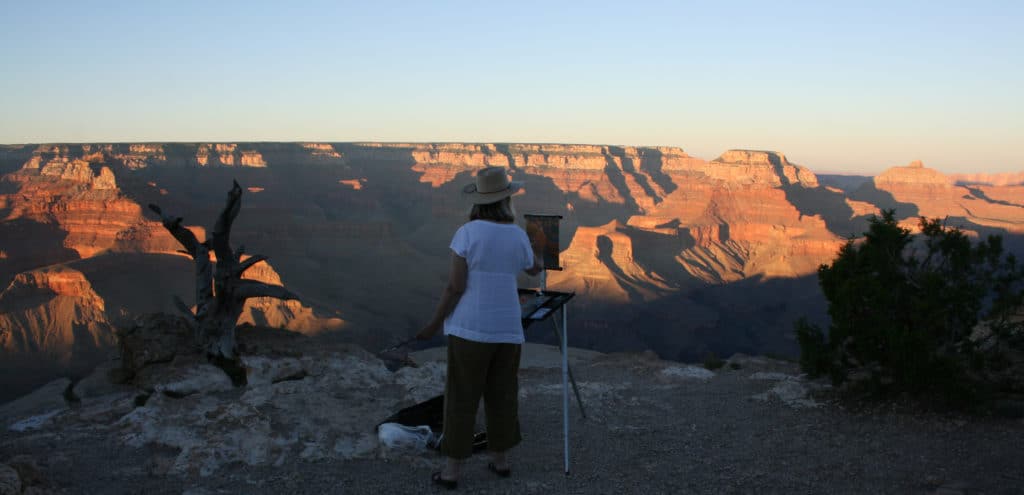
Stories from Painting the Grand Canyon en Plein Air
Amery Bohling: In the Right Company
I was painting with Bill Cramer and Joshua Been at Mather Point. We were situated on our favorite ledge, which juts out into the canyon like a slim triangle — me, then Been, with Cramer at the tip. When I finished, I started breaking down my easel. Not thinking, I lifted my palette off the tripod, which still had my panel holder, canvas, and umbrella attached. Without the palette to weigh it down, the whole thing went tumbling over the edge and into the canyon — not something you want to have happen during the middle of an event. Thankfully, Cramer is an accomplished rock climber and scrambled down the side to fetch it. Everything made it out in one piece, a bit bruised, but functioning and, in fact, still in use.
AmeryBohling.com
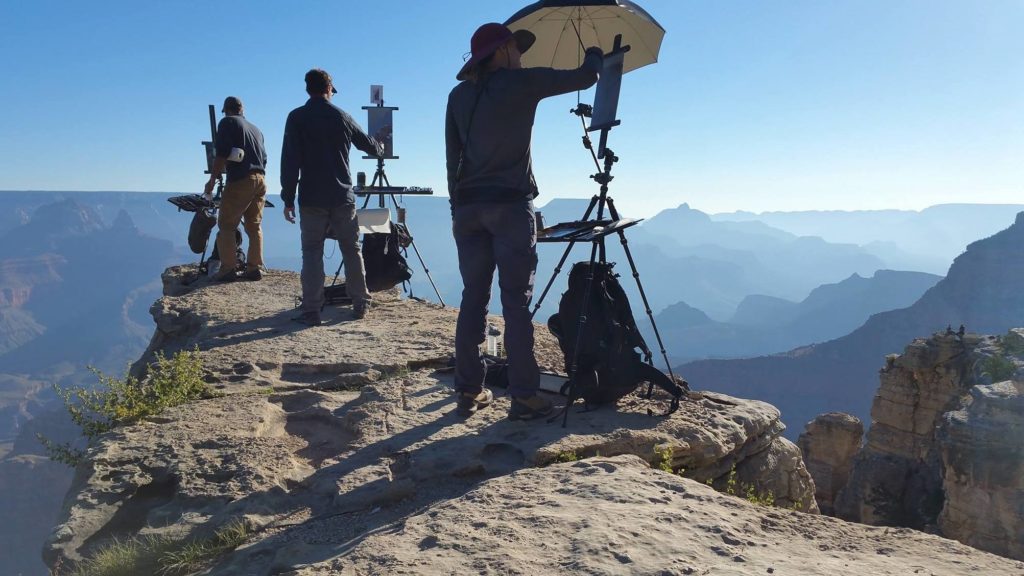
Bill Cramer: When Inspiration and Lightning Strike
I was painting beneath the railing at Hopi Point during a plein air event when I noticed a storm building to the east. It was a few miles away and didn’t seem to be moving, so I kept working, trying to ignore the many tourists above at the popular viewpoint. Inside a fraction of a second, everything seemed to pause. The air “inhaled” around me, and I heard a sharp electric chirp as a static force passed through my body and lightning hit a dead tree about six feet from where I was standing. There was an epic explosion of noise followed by the scattering of smoldering tree parts everywhere, including on my palette. The tourists screamed and ran for their tour buses. Fortunately, despite afternoon thunderstorms all that week, the ground was dry and didn’t allow the electric charge to go any farther than the poor tree. I packed up and left, not trusting that lightning doesn’t hit the same place twice. After all, there’s a reason that tree was already dead!
Billcramerstudio.com
Linda Glover Gooch: The Unwitting Witness
After conducting a plein air demo for the Grand Canyon Association several years
ago at Shoshone Point, I stayed around to paint by myself. I was tucked away in the trees, painting the point’s famous ridge, when a young couple showed up. Sound travels, so when he began to propose to her, I heard every word (she said yes!). I felt guilty eavesdropping (even though it wasn’t intentional), but I must admit I enjoyed it, too. Of course, I had to include them in my field study. As they were leaving, I emerged from the trees to congratulate them and let them know they would be in my painting. As it turned out, we realized we were all from Mesa, and the man’s brother had just installed my internet. Small world!
goochstudio.com
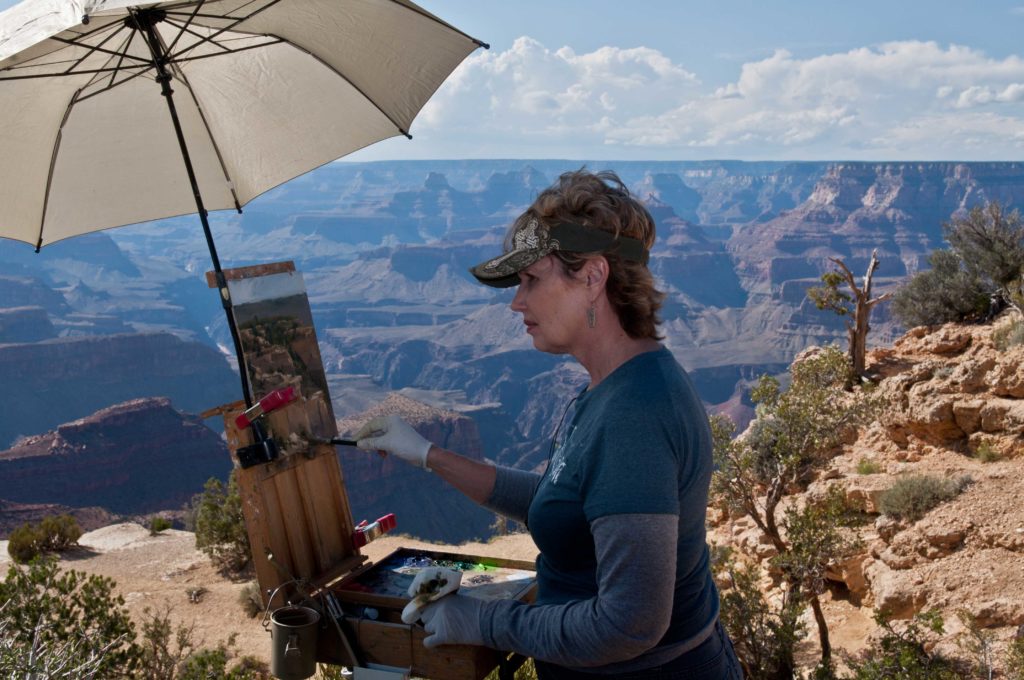
Marcia Molnar: Kids Say the Darndest Things
I love tourists. They talk about two things: the beauty of the canyon and death. One evening, I was out on the peninsula at Maricopa waiting for the sun to set. It’s not a big space, so you can hear everything that people around you say. On this occasion, I heard a small, clear voice rise above the others and say, “When I was a baby, someone picked me up and threw me over the edge, and when I hit the bottom, I died.” Looking like deer in headlights, his parents quickly whisked him away. I thought I’d never hear a story like that again, but the next morning I was at the amphitheater on the Trail of Time when I heard a little boy about six years old tell his father, “This is where the angels sing, only they use really foul language.” The father just looked at his son and said, “Keep walking.” thepaintedjournal.com
John D. Cogan: Lost in Translation
When I paint in a popular public place, I expect encounters with curious visitors. Many want to take photos of me or my painting, which I never mind. Due to the international popularity of the Grand Canyon, many visitors speak little or no English and often use only the one word they need: “Picture?” So when a couple stopped me one day and asked “Picture?” I happily said yes. At that point, the man walked up, grabbed the brush out of my hand, moved me aside, and posed next to my painting so his wife could take a picture of him as if he were the artist. My jaw dropped. But it wasn’t over. They then switched places, and he took a similar picture of her. When they were done, she handed me back the brush, and they walked off as if it was the most natural way to deal with an artist. I didn’t know whether to feel insulted, foolish, or honored.
johncogan.com
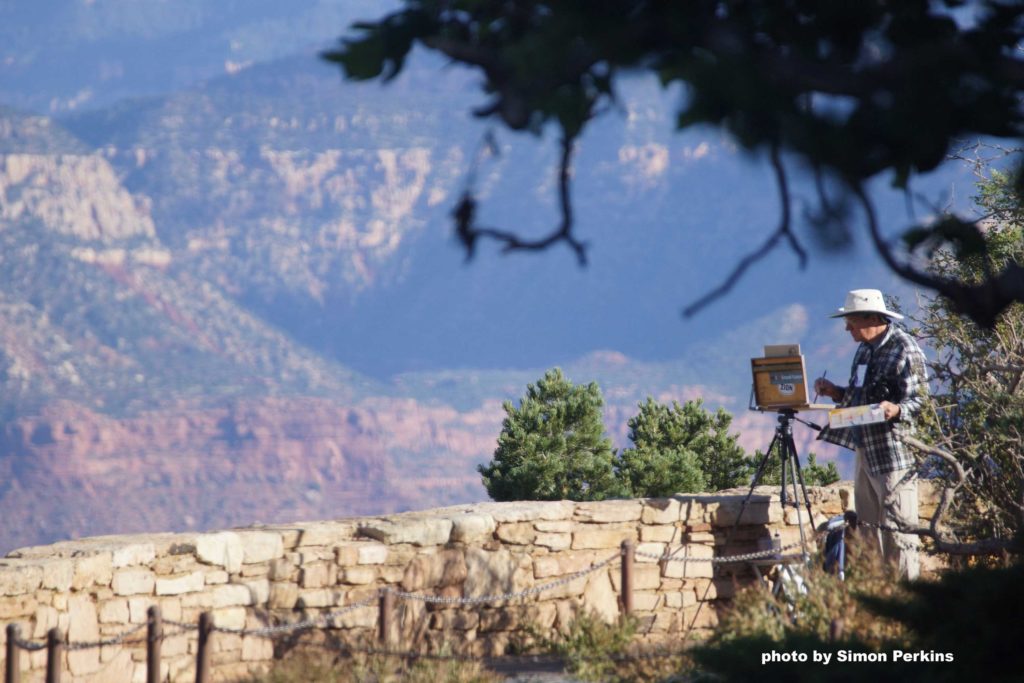
Upcoming travel and art events with Streamline Publishing:
- May 2-6, 2020: The 9th Annual Plein Air Convention & Expo
- June 7-14, 2020: Publisher’s Invitational: Paint Adirondacks
- October 12-19, 2020: Publisher’s Invitational: Fall Color Week in New Hampshire’s White Mountains
Click here to subscribe to PleinAir Today,
the free newsletter from PleinAir Magazine.

